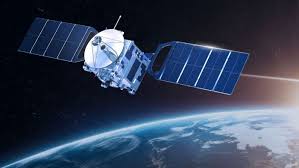On March 2, 2025, SpaceX successfully launched a Falcon 9 rocket carrying 21 Starlink satellites from Cape Canaveral Space Force Station. The liftoff occurred at 9:24 p.m. ET (March 3, 2025, at 02:24 GMT), and the mission included 13 satellites equipped with direct-to-cell capabilities. The first stage of the rocket successfully landed on the droneship “Just Read the Instructions,” stationed approximately 400 kilometers off Florida’s coast. However, shortly after landing, the booster, designated B1086, was lost due to damage sustained by one of its landing legs.
Booster Loss After Landing
According to SpaceX, a fire at the aft end of the booster resulted in structural damage, leading to its collapse. The incident occurred after the rocket had completed its return to Earth and made contact with the landing platform. Data from this failure will be examined to improve the reliability of future Falcon 9 missions, as stated in SpaceX’s official mission description.
Kiko Dontchev, SpaceX’s Vice President of Launch, emphasized that every failure is an opportunity to learn and improve. This setback will not only enhance the reliability of the Falcon 9 but also of all SpaceX vehicles.
Mission Details and Starlink Expansion
The deployment of the 21 satellites took place approximately 65 minutes after launch, marking another step in the expansion of SpaceX’s Starlink constellation. More than 7,000 operational Starlink satellites are currently in orbit, contributing to global broadband coverage.
This launch marked the Falcon 9 booster’s fifth and final flight. The B1086 had previously been used for three Starlink missions, as well as the GOES-U and Maxar 3 missions. SpaceX has completed 26 Falcon 9 missions in 2025, with 19 dedicated to Starlink. The company continues to advance its satellite network despite the loss of the booster in this mission.
Future Launches
SpaceX is scheduled for several upcoming launches, including the Starlink 12-21 mission on March 7, 2025, at 05:05 GMT (12:05 a.m. EST), and the Starlink 12-16 mission on March 7, 2025, at 14:09 GMT (9:09 a.m. EST). These missions will further expand the Starlink constellation, bringing the total number of launched satellites to over 8,000.
Conclusion
Despite the loss of the Falcon 9 booster, SpaceX’s mission to expand the Starlink constellation continues successfully. The data gathered from this incident will be crucial in improving future missions, ensuring greater reliability and safety. Stay tuned for more updates on SpaceX’s ongoing efforts to revolutionize global internet access through the Starlink network.
For more detailed information and the latest updates, keep checking Technook!



